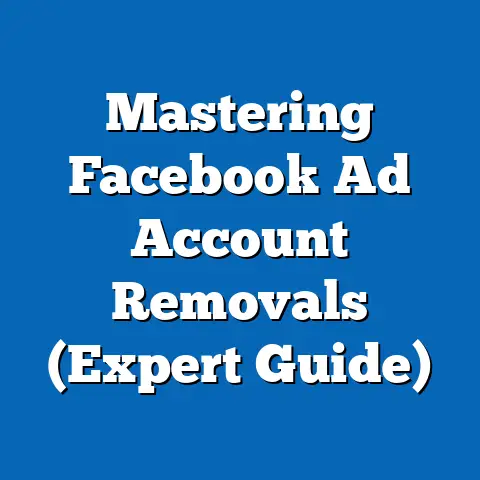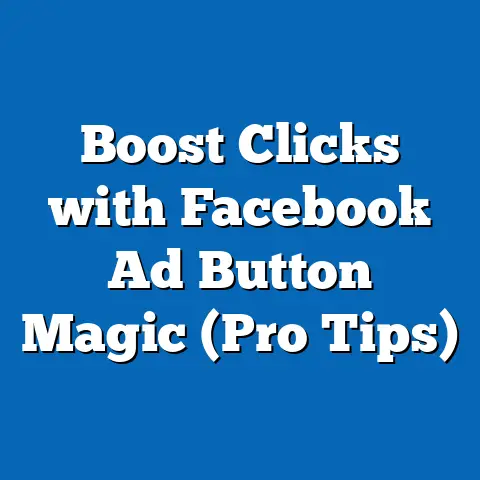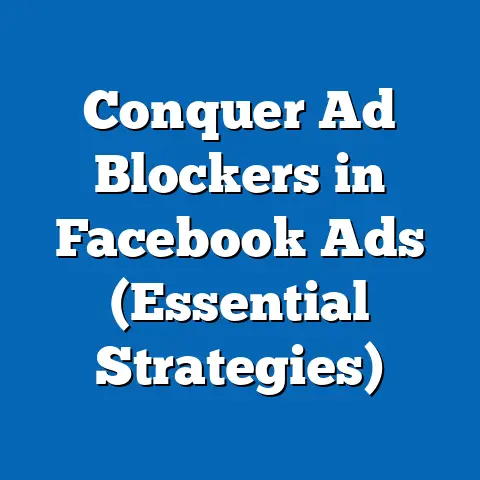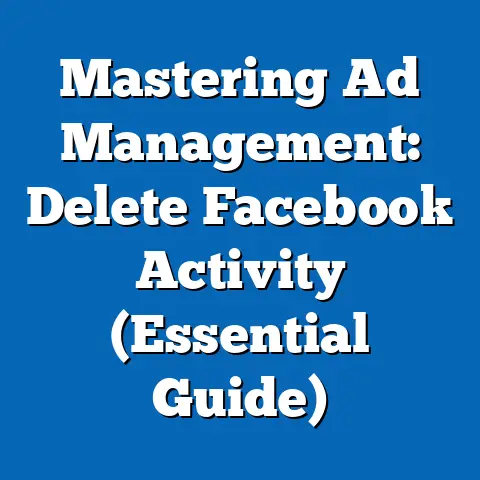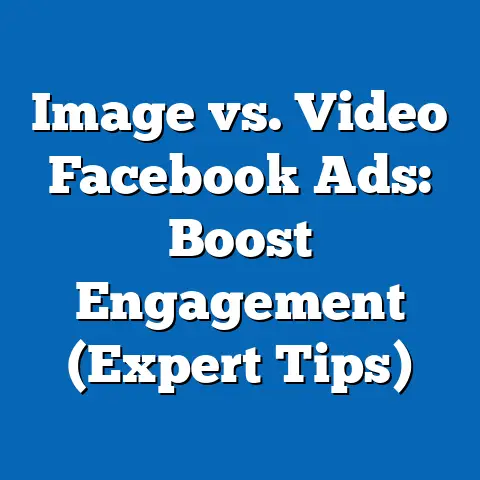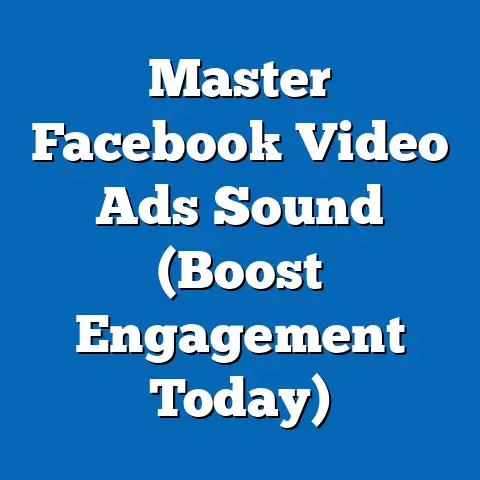Are Facebook Ads Really Free? (Strategic Insights Revealed)
Picture this: I’m sitting at my favorite local café, latte in hand, and the buzz of conversation swirls around me. As I scroll through my Facebook feed, I’m bombarded with ads. A sleek new laptop catches my eye, followed by an ad for a yoga retreat in Bali. It’s a targeted barrage, and I can’t help but wonder, “Can businesses really leverage these ads for free?” Especially when I remember the tight marketing budgets of so many small business owners I’ve worked with. It’s tempting to think Facebook offers a magic, cost-free marketing solution, but the reality is far more nuanced. Are Facebook ads really free? The short answer is no. But the long answer is a strategic exploration of value, investment, and the true cost of reaching your audience.
Understanding Facebook Ads
Facebook ads are essentially paid messages that businesses use to reach potential customers on the Facebook platform. They appear in various formats, blending seamlessly into the user’s news feed, stories, and even within Messenger. Think of them as a digital billboard, but one that can be incredibly precise in targeting who sees it.
There’s a wide variety of Facebook ad types to choose from, each designed to achieve different marketing goals. Here are a few common ones:
- Image Ads: Simple, visually appealing ads featuring a single image and accompanying text. These are great for showcasing products or services quickly.
- Video Ads: Engaging ads that use video to capture attention and tell a story. These are perfect for demonstrating product features or sharing customer testimonials.
- Carousel Ads: Ads that allow you to display multiple images or videos in a scrolling format. This is ideal for showcasing a range of products or highlighting different aspects of a single offering.
- Collection Ads: Mobile-first ads designed for e-commerce businesses. They feature a hero image or video followed by a selection of relevant products.
- Lead Generation Ads: Ads designed to collect leads directly within the Facebook platform. Users can fill out a form without leaving Facebook, making it easy to gather contact information.
All these ads are created and managed within the Facebook Ads Manager. This is the central hub for crafting your campaigns, setting your budget, targeting your audience, and tracking your results. It’s a powerful tool, but it can also be a bit overwhelming at first. Think of it as the control panel for your Facebook advertising efforts.
Takeaway: Facebook ads are paid messages designed to reach specific audiences on the platform. The Ads Manager is the central tool for creating and managing these campaigns.
The Cost Structure of Facebook Ads
Let’s get down to brass tacks: the pricing model. The core concept to understand is the difference between organic reach and paid promotions. Organic reach refers to the number of people who see your content without you paying for it. It’s driven by factors like the quality of your content, the engagement it generates, and the size of your audience. Paid promotions, on the other hand, involve paying Facebook to show your content to a wider or more targeted audience.
Facebook uses an auction system for ad placements. Think of it like eBay, but instead of bidding on Beanie Babies, you’re bidding for the attention of Facebook users. Several factors influence how much you’ll pay:
- Audience Targeting: The more specific and niche your target audience, the more competition there will likely be, driving up costs.
- Ad Relevance: Facebook rewards ads that are relevant and engaging to users. The higher your ad’s relevance score, the lower your costs will be.
- Competition: The more businesses targeting the same audience as you, the higher the competition and the more you’ll likely pay.
- Bidding Strategy: How you bid plays a big role. You can set a manual bid, a cost cap, or let Facebook optimize your bids for you.
Two key metrics to understand are Cost Per Click (CPC) and Cost Per Impression (CPM):
- CPC: The amount you pay each time someone clicks on your ad. This is a good metric to focus on if your goal is to drive traffic to your website or landing page.
- CPM: The amount you pay for every 1,000 impressions (times your ad is shown). This is useful for brand awareness campaigns where you want to reach as many people as possible.
I’ve seen CPCs range from a few cents to several dollars, depending on the industry, audience, and ad quality. CPMs can vary similarly. For example, a highly competitive industry like finance might see higher CPCs than a niche hobby like stamp collecting.
Takeaway: Facebook ad costs are determined by an auction system influenced by factors like audience targeting, ad relevance, competition, and bidding strategy. Key metrics to track are CPC and CPM.
The Myth of “Free” Facebook Ads
Now, let’s address the elephant in the room: the idea of “free” Facebook ads. It’s a common misconception fueled by the fact that you can create a Facebook page and post content without directly paying Facebook. But here’s the truth: relying solely on organic reach is like shouting into a crowded stadium and hoping someone hears you.
The reality is that organic reach has been steadily declining for years. Facebook’s algorithm prioritizes content from friends and family, meaning that your business posts are likely to get buried in the news feed. In fact, studies have shown that organic reach for Facebook pages can be as low as 1-2% of your total audience. Ouch!
Even if you do manage to create engaging content that gets some organic traction, you’ll likely find yourself spending money on other things to enhance your ad performance. For example:
- Graphic Design Software: Creating visually appealing ads often requires software like Canva or Adobe Photoshop.
- Stock Photos and Videos: High-quality visuals are essential for attracting attention. You might need to purchase stock photos or videos from sites like Shutterstock or Pexels.
- Analytics Tools: Tracking your ad performance requires tools like Google Analytics or third-party Facebook analytics platforms.
Beyond the direct monetary costs, there are also hidden costs associated with running Facebook ads. These include:
- Time Investment: Creating, managing, and optimizing Facebook ad campaigns takes time and effort. You’ll need to dedicate time to researching your audience, crafting compelling ad copy, designing visuals, and analyzing your results.
- Learning Curve: Facebook Ads Manager can be complex and confusing, especially for beginners. You’ll need to invest time in learning the platform and understanding how to create effective campaigns.
- Testing and Experimentation: Successful Facebook advertising requires constant testing and experimentation. You’ll need to be willing to try different ad formats, targeting options, and bidding strategies to find what works best for your business.
I’ve seen countless businesses waste time and money on Facebook ads simply because they didn’t understand the platform or the underlying principles of effective advertising. It’s not enough to just throw up an ad and hope for the best.
Takeaway: While you can create a Facebook page for free, relying solely on organic reach is no longer an effective strategy. There are hidden costs associated with running Facebook ads, including time investment, the learning curve, and the need for testing and experimentation.
The Value of Paid Advertising
So, if “free” Facebook ads are a myth, is it worth investing in paid advertising? Absolutely! When used strategically, Facebook ads can deliver a significant return on investment (ROI).
The key is to understand your target audience and craft ads that are relevant and engaging to them. Here’s where that laser-focused targeting comes in. Facebook allows you to target users based on a wide range of factors, including:
- Demographics: Age, gender, location, education, income, etc.
- Interests: Hobbies, passions, activities, etc.
- Behaviors: Purchase history, online activity, etc.
- Connections: People who have liked your page or interacted with your content.
- Custom Audiences: Uploading a list of existing customers or website visitors to target them with specific ads.
- Lookalike Audiences: Creating a new audience that is similar to your existing customers or website visitors.
By carefully targeting your ads, you can ensure that you’re reaching the people who are most likely to be interested in your products or services. This can lead to increased brand awareness, customer engagement, and ultimately, sales.
I’ve personally seen businesses achieve amazing results with well-targeted Facebook ads. For example, a local bakery I worked with was able to increase their online orders by 30% by targeting Facebook users in their area who were interested in baking and desserts. A clothing boutique saw a 25% increase in website traffic by targeting users who had previously visited their website.
The beauty of Facebook ads is that you can track your results in real-time and make adjustments as needed. You can see how many people are seeing your ads, how many are clicking on them, and how many are converting into customers. This allows you to optimize your campaigns for maximum ROI.
Takeaway: Investing in Facebook ads can deliver a significant ROI when used strategically. The key is to understand your target audience and craft ads that are relevant and engaging to them.
Alternatives to Facebook Ads
While Facebook ads can be a powerful marketing tool, it’s important to remember that they’re not the only option. There are several alternatives to Facebook advertising that you might want to consider, depending on your budget and marketing goals.
- Organic Social Media Strategies: Focus on creating high-quality content that resonates with your audience and encourages engagement. This can involve posting regularly, running contests and giveaways, and interacting with your followers.
- Influencer Marketing: Partner with influencers in your niche to promote your products or services. This can be a great way to reach a wider audience and build trust with potential customers.
- Search Engine Optimization (SEO): Optimize your website and content for search engines like Google. This can help you attract organic traffic from people who are searching for information related to your business.
- Email Marketing: Build an email list and send regular newsletters and promotional emails to your subscribers. This can be a great way to nurture leads and drive sales.
- Other Digital Marketing Platforms: Explore other digital marketing platforms like Google Ads, LinkedIn Ads, and Twitter Ads. Each platform has its own strengths and weaknesses, so it’s important to choose the one that’s best suited for your business.
Each of these alternatives has its own pros and cons in terms of cost and effectiveness. For example, organic social media strategies are free to implement, but they can take a long time to generate results. Influencer marketing can be very effective, but it can also be expensive. SEO is a long-term strategy that can deliver sustainable results, but it requires ongoing effort.
I always advise businesses to diversify their marketing efforts and not rely solely on one platform or strategy. A well-rounded approach that combines different tactics can help you reach a wider audience and achieve your marketing goals.
Takeaway: There are several alternatives to Facebook advertising, each with its own pros and cons. A well-rounded marketing approach that combines different tactics is often the most effective.
Conclusion
So, are Facebook ads really free? The answer is a resounding no. While you can create a Facebook page for free, relying solely on organic reach is no longer a viable strategy. To effectively reach your target audience and achieve your marketing goals, you’ll need to invest in paid advertising.
However, that investment can be incredibly worthwhile. When used strategically, Facebook ads can deliver a significant ROI, driving increased brand awareness, customer engagement, and sales. The key is to understand your target audience, craft ads that are relevant and engaging, and track your results to optimize your campaigns.
Think of Facebook ads not as a free lunch, but as a powerful tool that can help you achieve your business goals. It’s an investment that requires time, effort, and resources, but the potential rewards are well worth it. Now, I challenge you to evaluate your own advertising strategies. Are you truly reaching your target audience, or are you simply shouting into the void? What is the true cost of reaching your audience on Facebook, and are you getting the most out of your investment? The answers to these questions will guide you toward a more effective and profitable Facebook advertising strategy.

